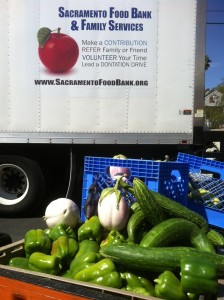http://www.cdfa.ca.gov/egov/Press_Releases/Press_Release.asp?PRnum=12-031
A quarantine has been declared due to a Mediterranean fruit fly infestation detected in the Rancho Cucamonga area of San Bernardino County. Three adult males and one unmated female were detected in two traps on August 16, 2012. The United States Department of Agriculture (USDA), the San Bernardino County Agricultural Commissioner, the Los Angeles County Agricultural Commissioner, and the California Department of Food and Agriculture (CDFA) are working collaboratively on this project.
Additional information, including a map of the 88-square-mile quarantine zone, is available at: http://www.cdfa.ca.gov/plant/PE/InteriorExclusion/medfly_quarantine.html
To eradicate the infestation, the release of sterile male Medflies began last week, at a rate of 250,000 flies per square mile per week. The release area is approximately 11 square miles.
“Our system to detect and respond to invasive species like the Mediterranean fruit fly is working well and according to design,” said CDFA Secretary Karen Ross. “The release of sterile Medflies is a proven method of eradicating an infestation. The key is to move swiftly and take action before the pests can cause widespread damage.”
The quarantine will affect any growers in the area as well as local residents – home gardeners are urged to consume homegrown produce on site and not move it from the property. That helps protect against the spread of the infestation to nearby regions where it could affect California’s food supply.
The sterile male Medflies are brought in from the joint CDFA/USDA rearing facility in Los Alamitos, which prepares hundreds of millions of sterile flies weekly for release over the Los Angeles Basin. The sterile release program has a proven track record in Southern California. Sterile male flies mate with fertile female flies in the environment but produce no offspring. The Medfly population decreases as the wild flies reach the end of their natural life span with no offspring to replace them, ultimately resulting in the eradication of the pest.
Last week, agricultural officials also applied limited treatments to host trees and plants in a 200 meter radius – about one-eighth of a mile – from the sites where the flies were found. The substance being applied is the organic product GF-120 Naturalyte (active ingredient: spinosad). Residents in treatment areas are individually notified in advance of treatments.
The Medfly can infest more than 250 types of fruits and vegetables, causing severe impacts on California agricultural exports and backyard gardens alike. Residents who believe their fruits or vegetables are infested with fruit fly maggots are encouraged to call the state’s toll-free Pest Hotline at 1-800- 491-1899.
The eradication approach in the Rancho Cucamonga area is the standard Medfly program used by CDFA and is the safest, most effective response program available. CDFA has successfully eradicated each and every detected Medfly infection in California history, dating back more than 30 years.





